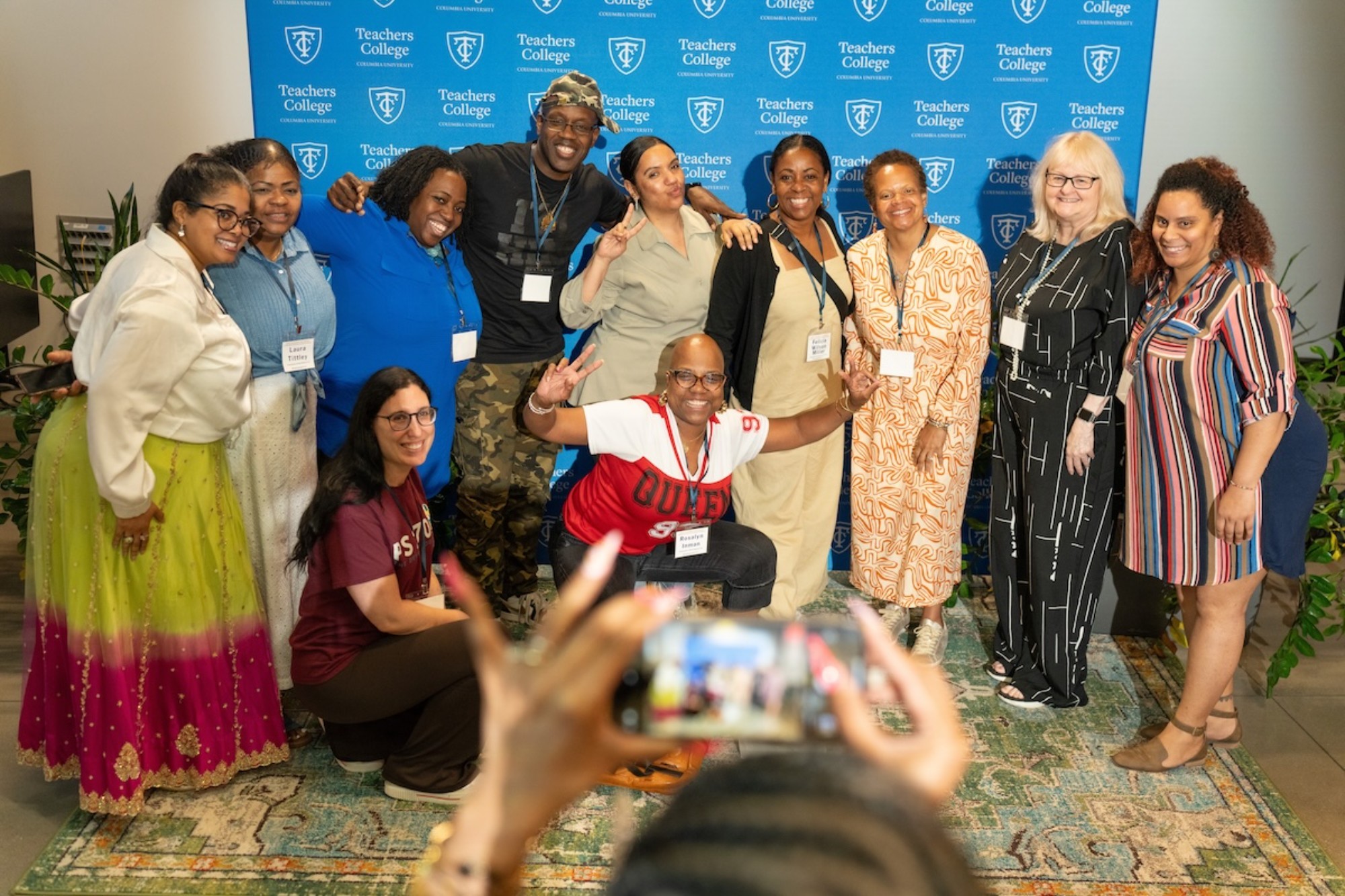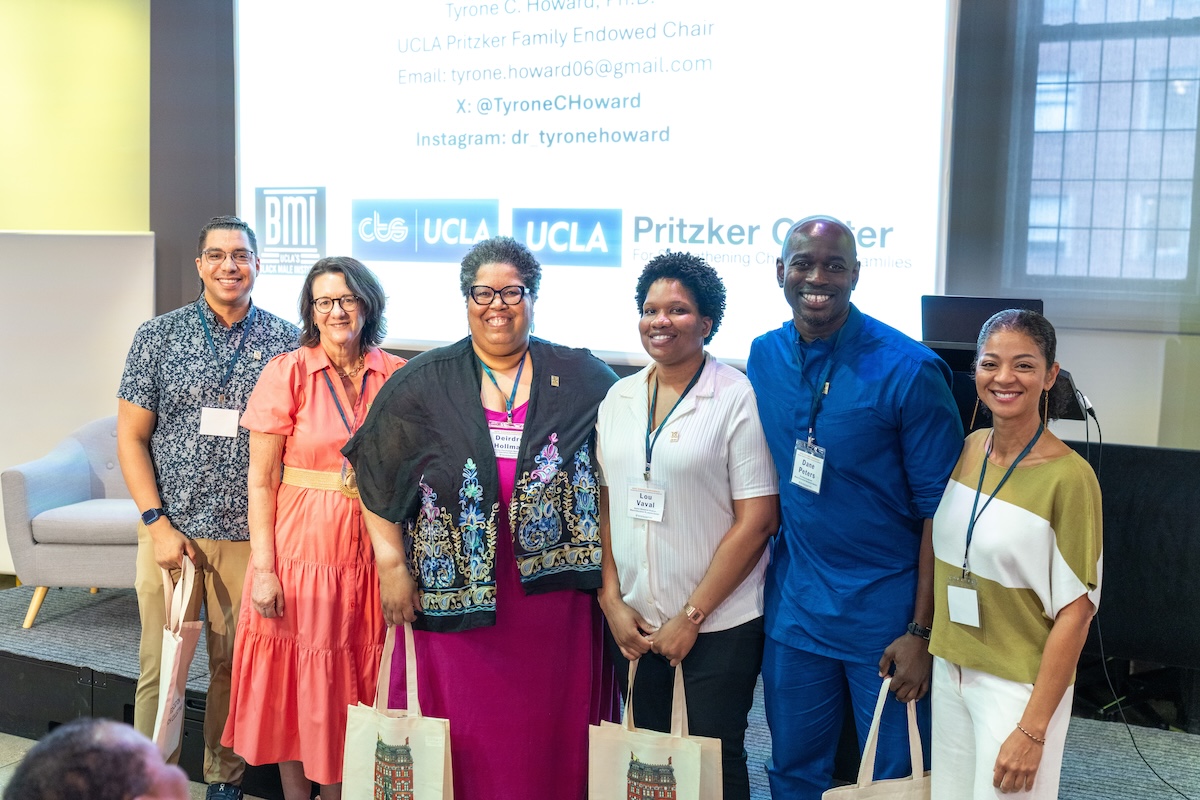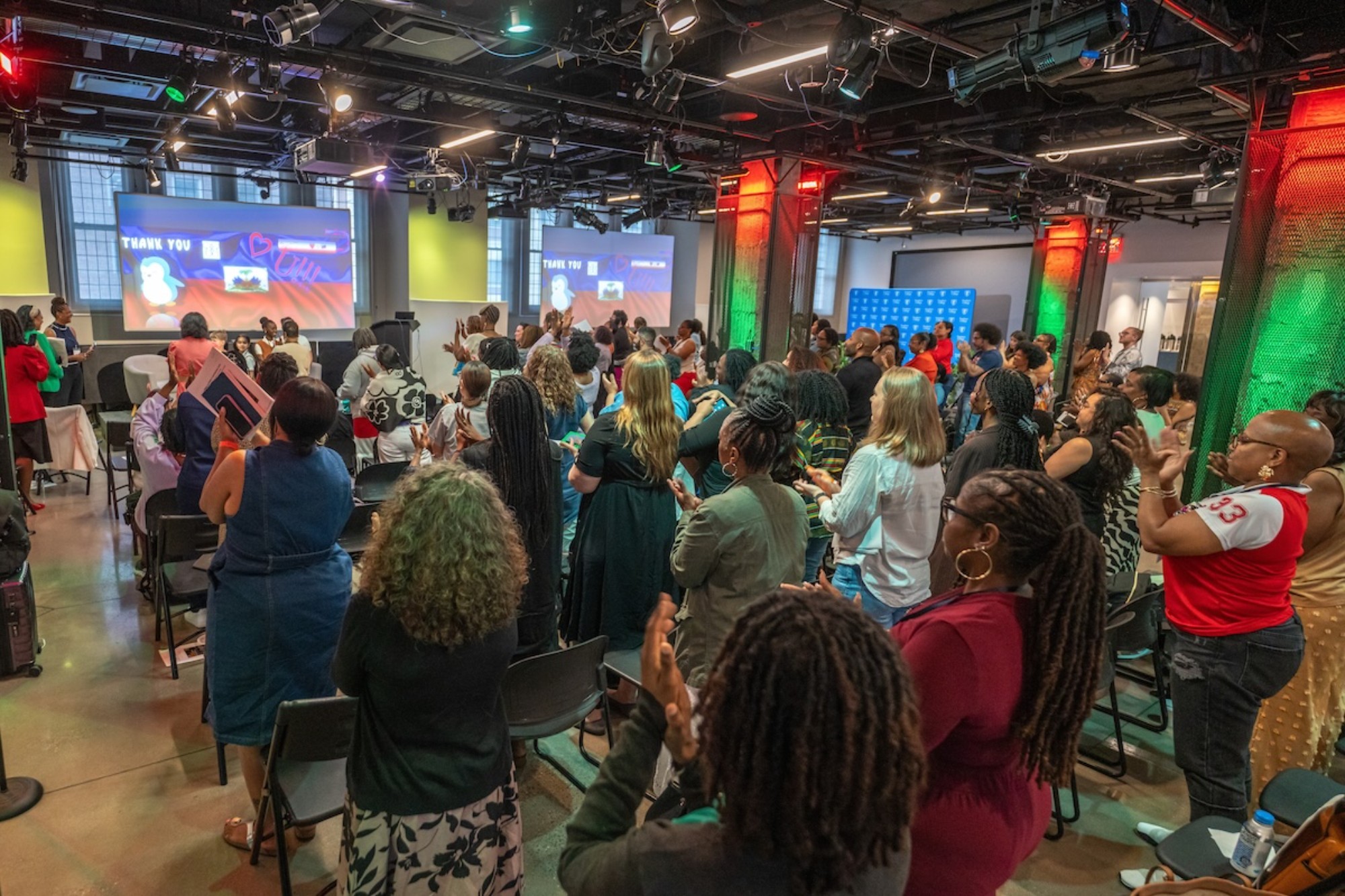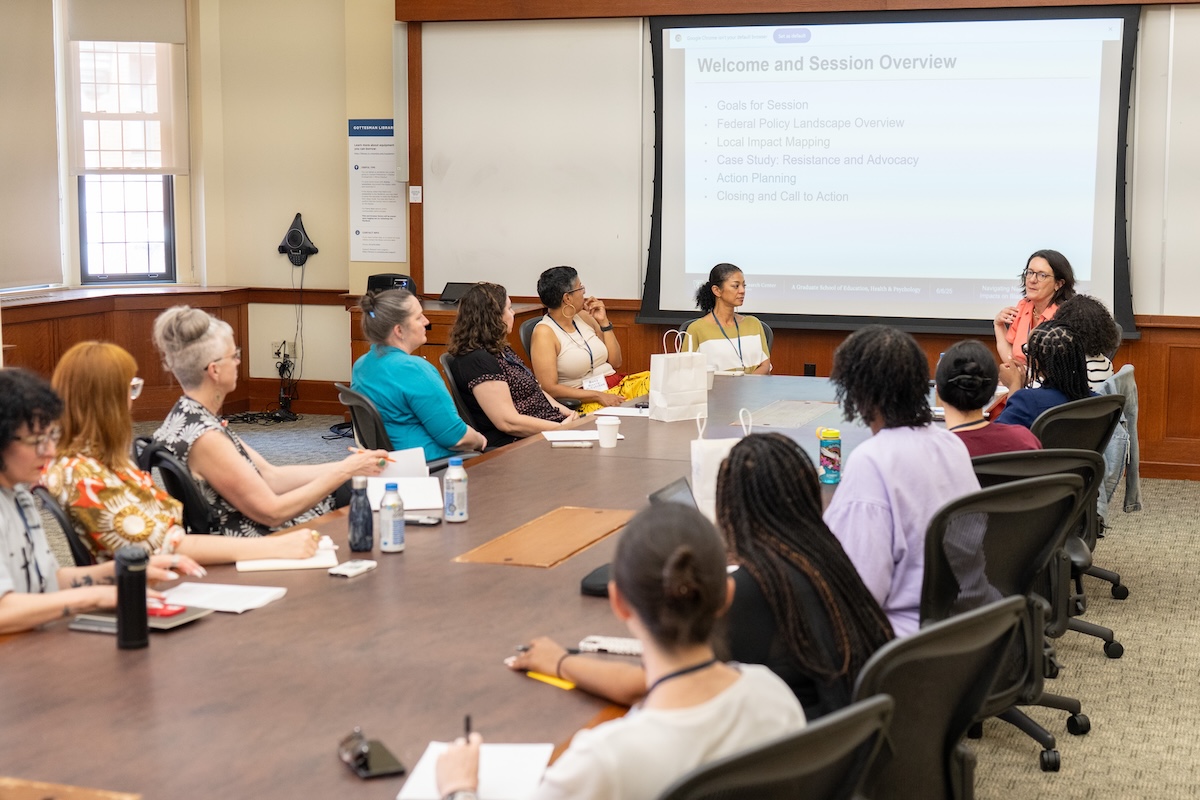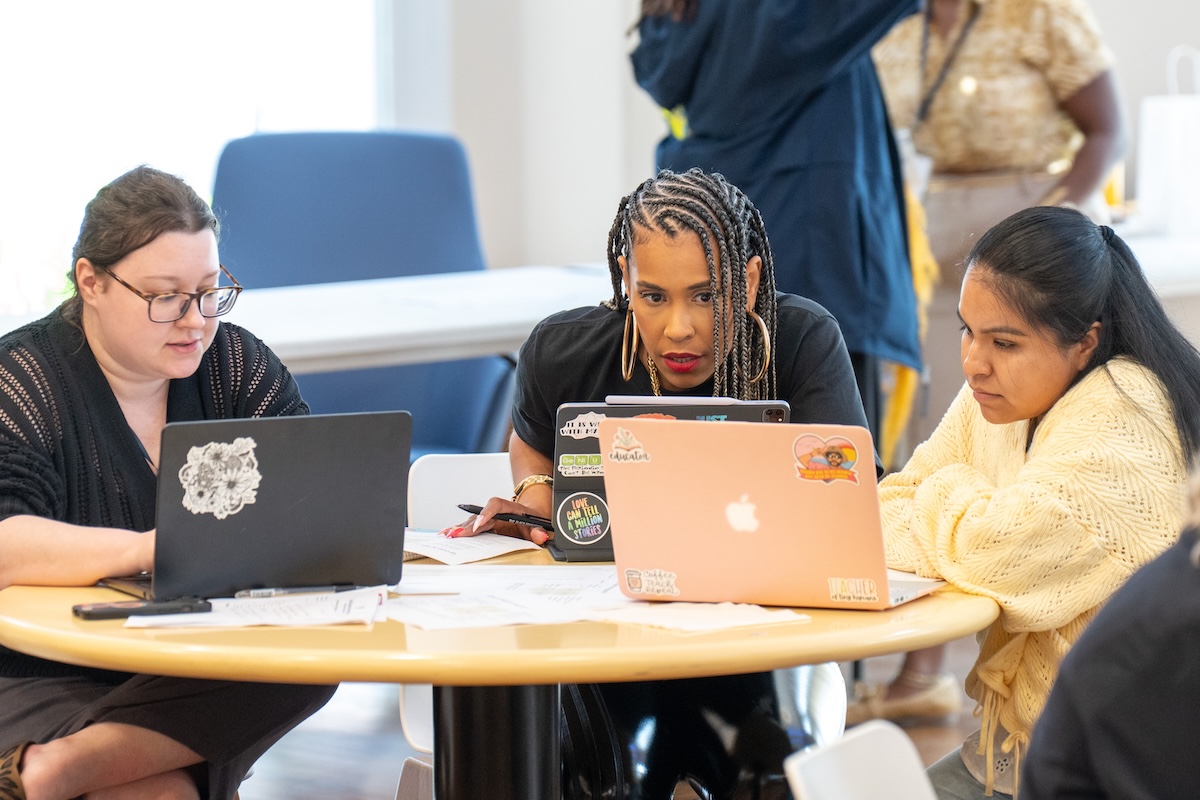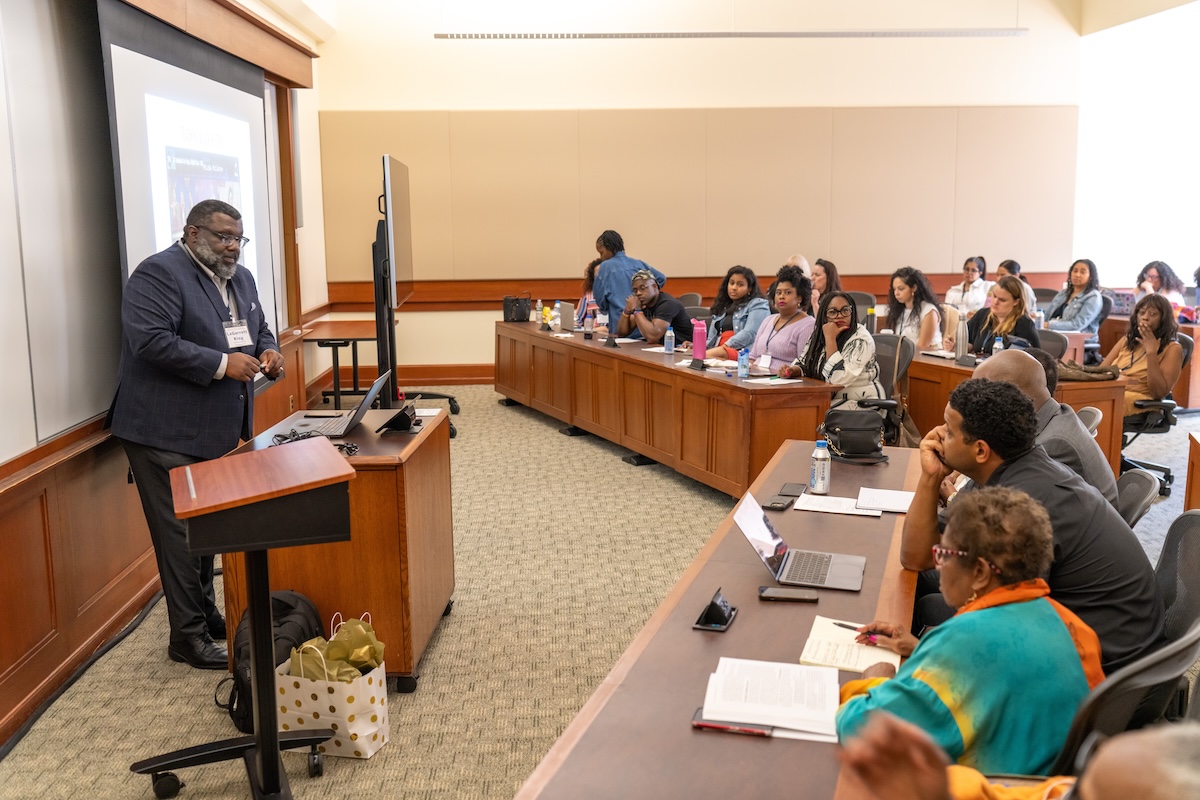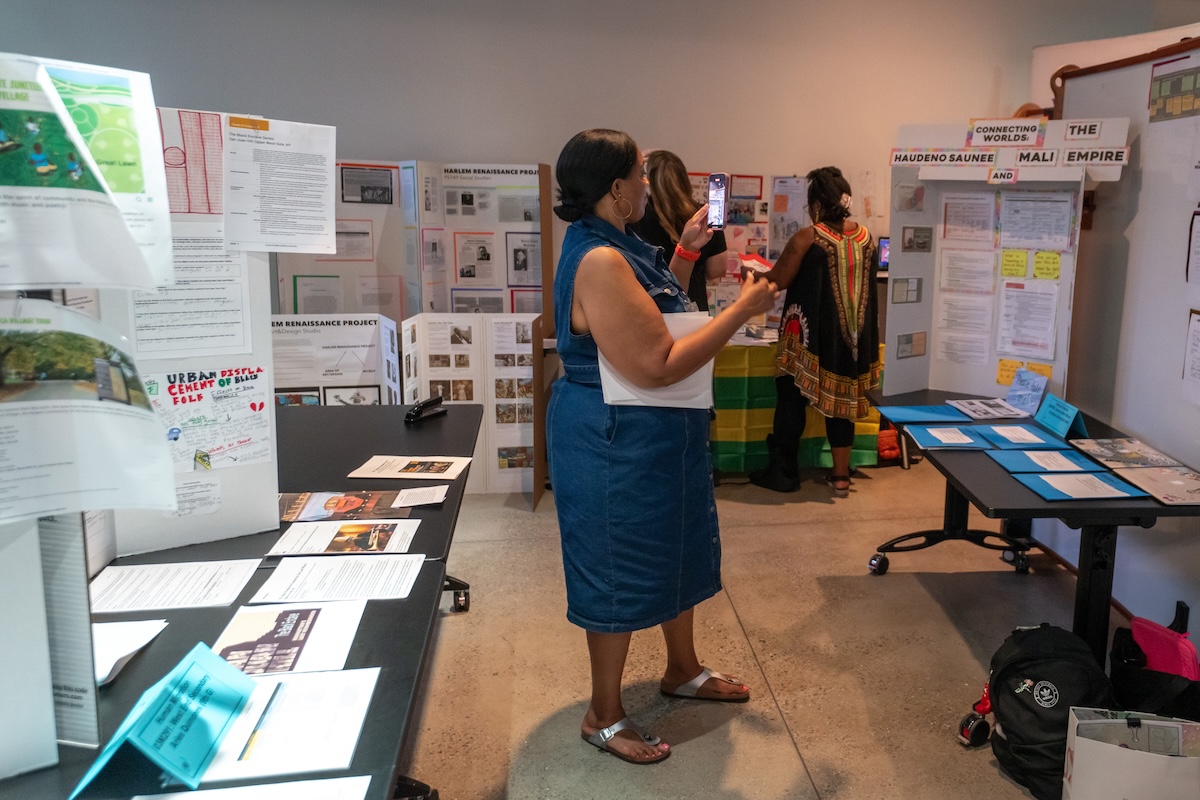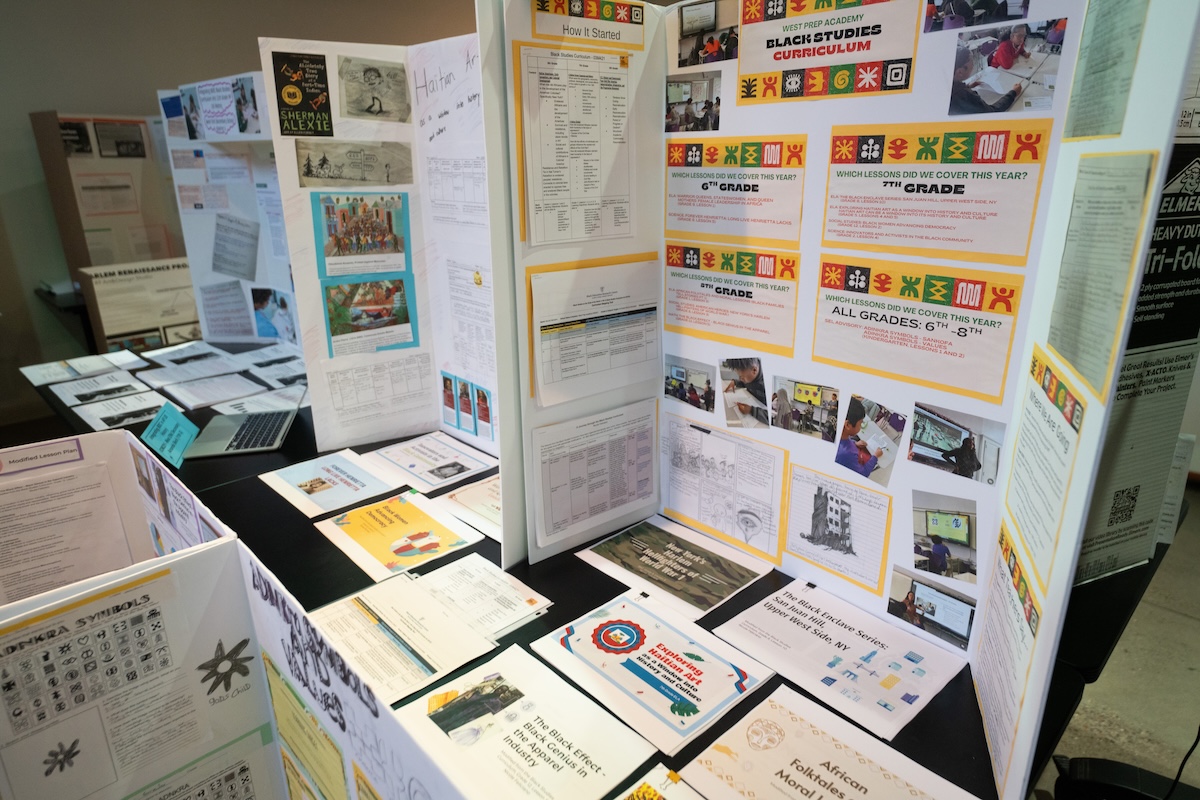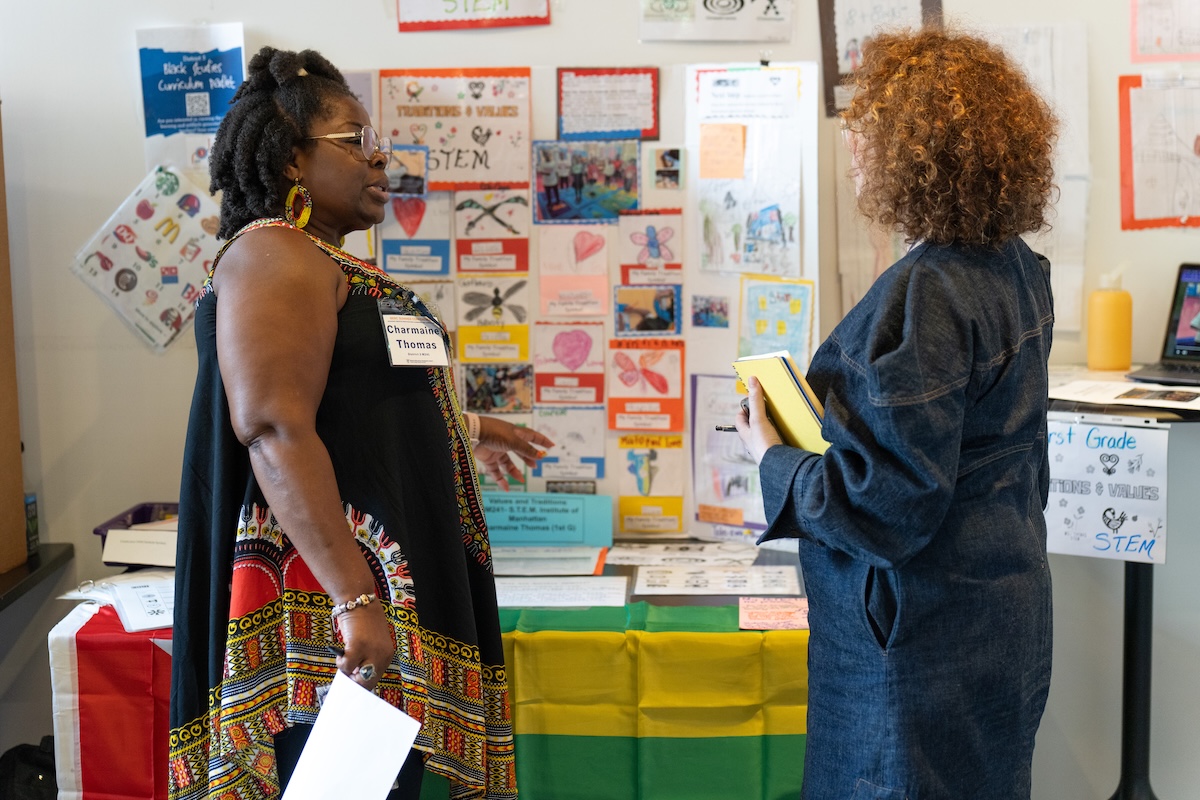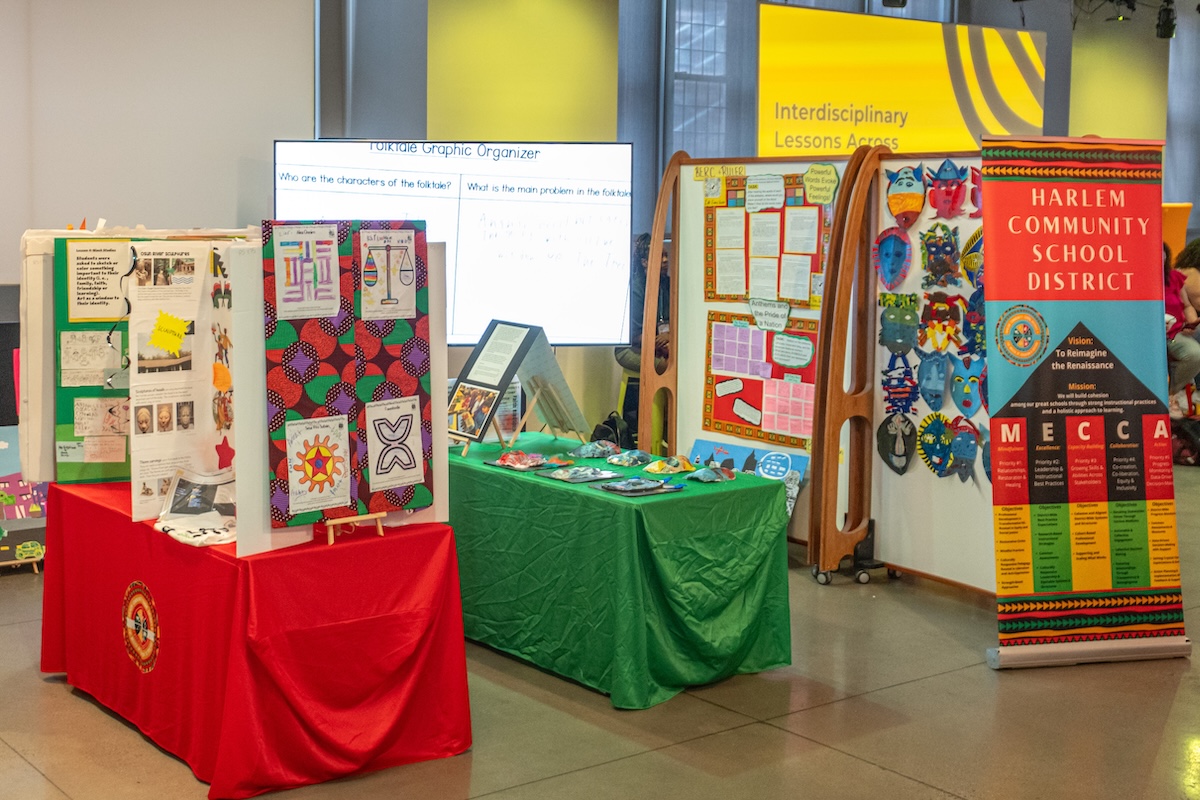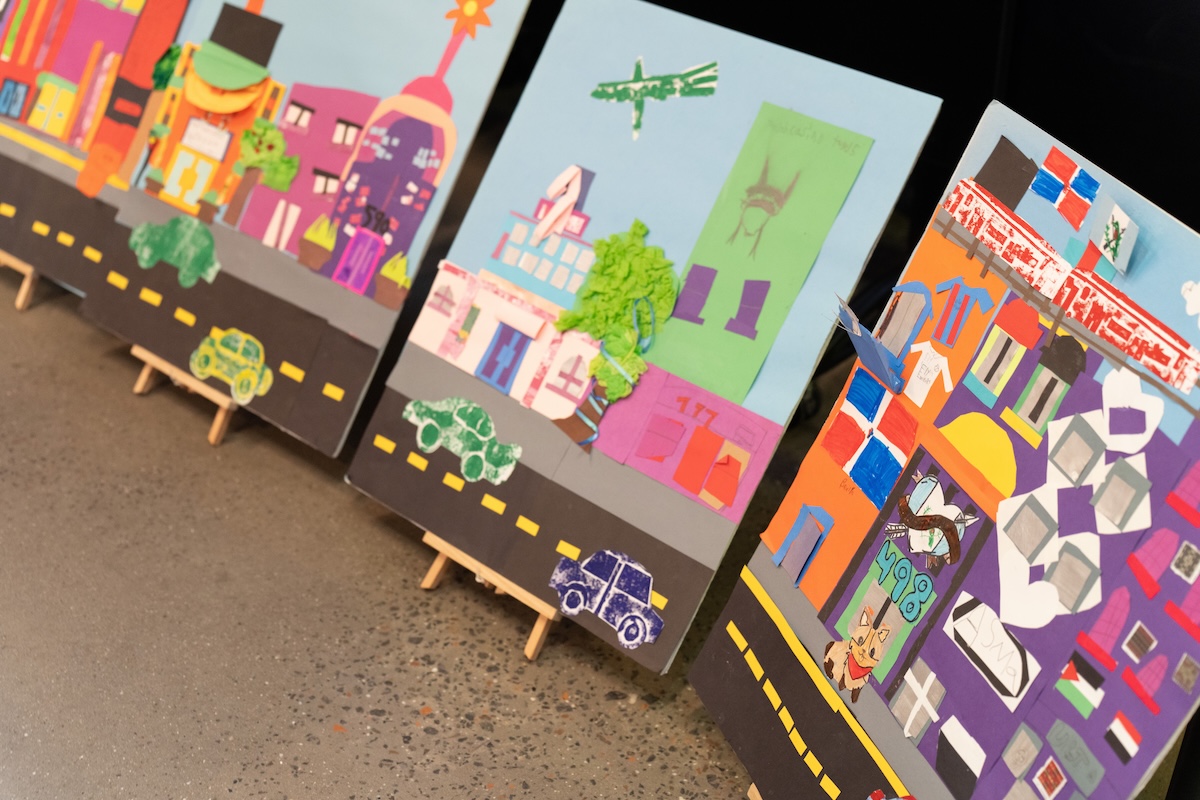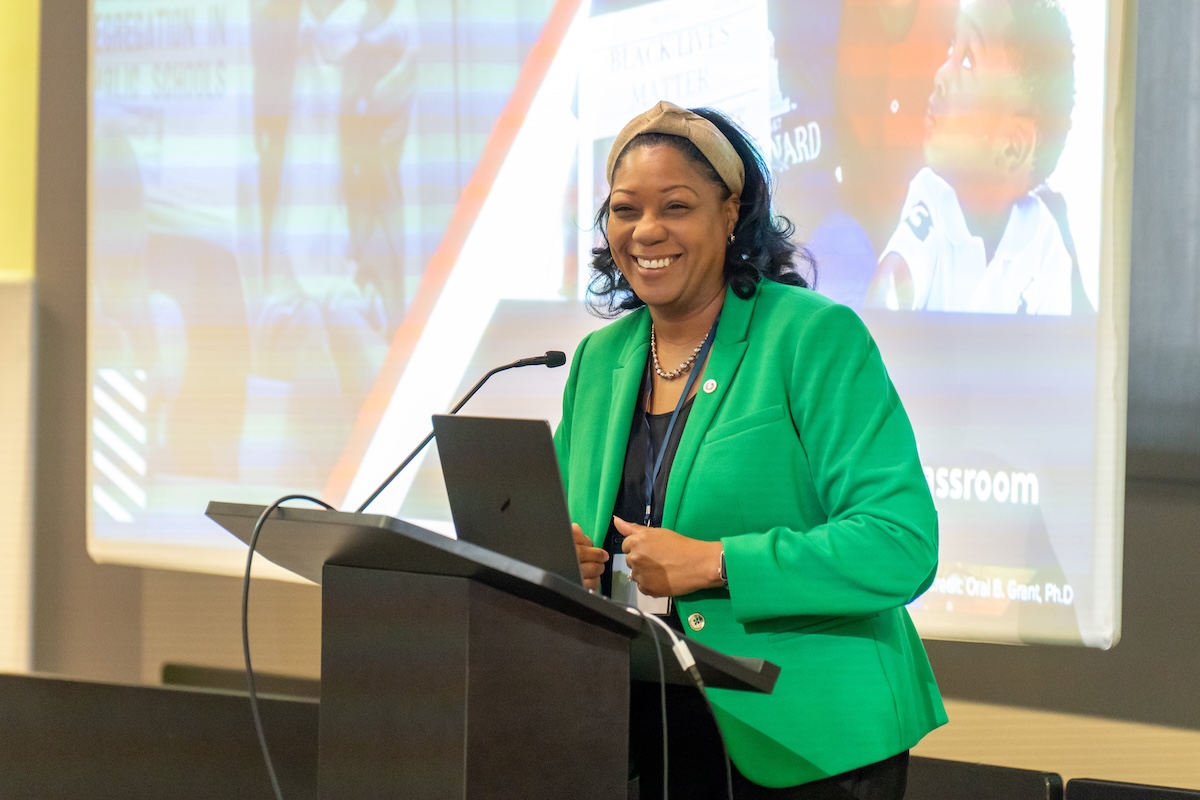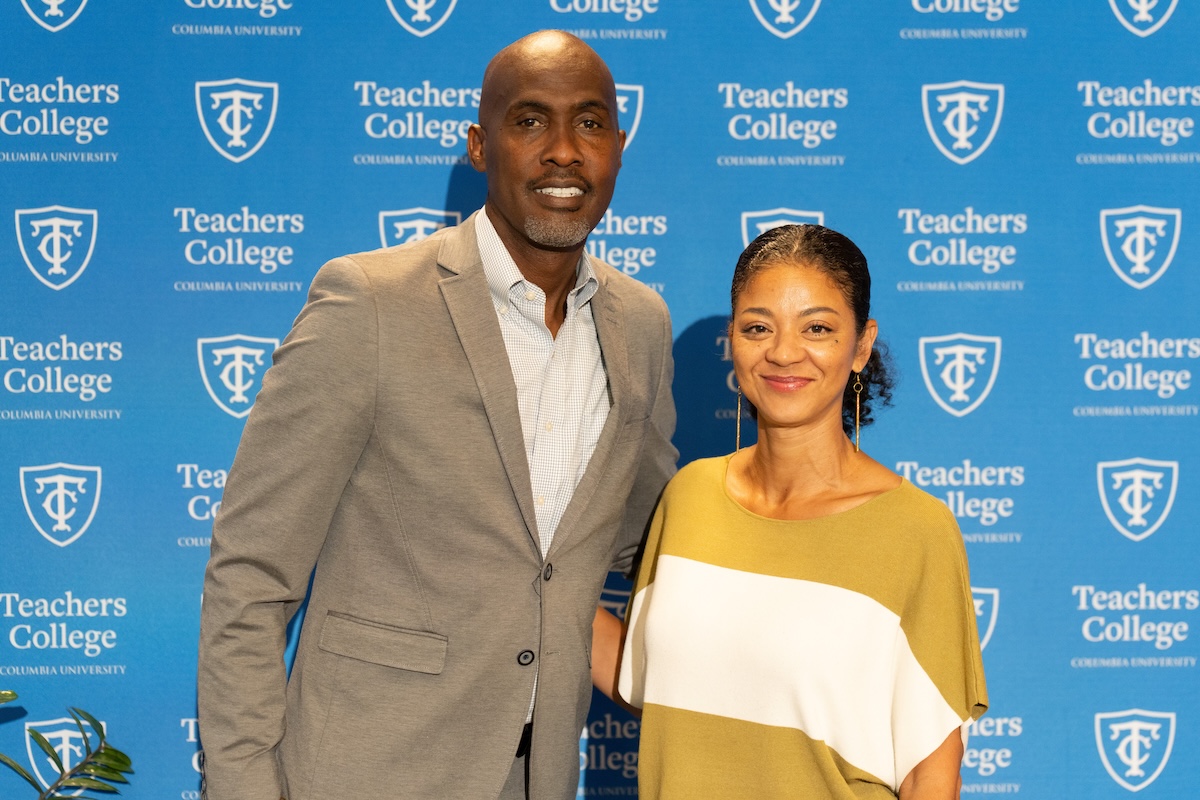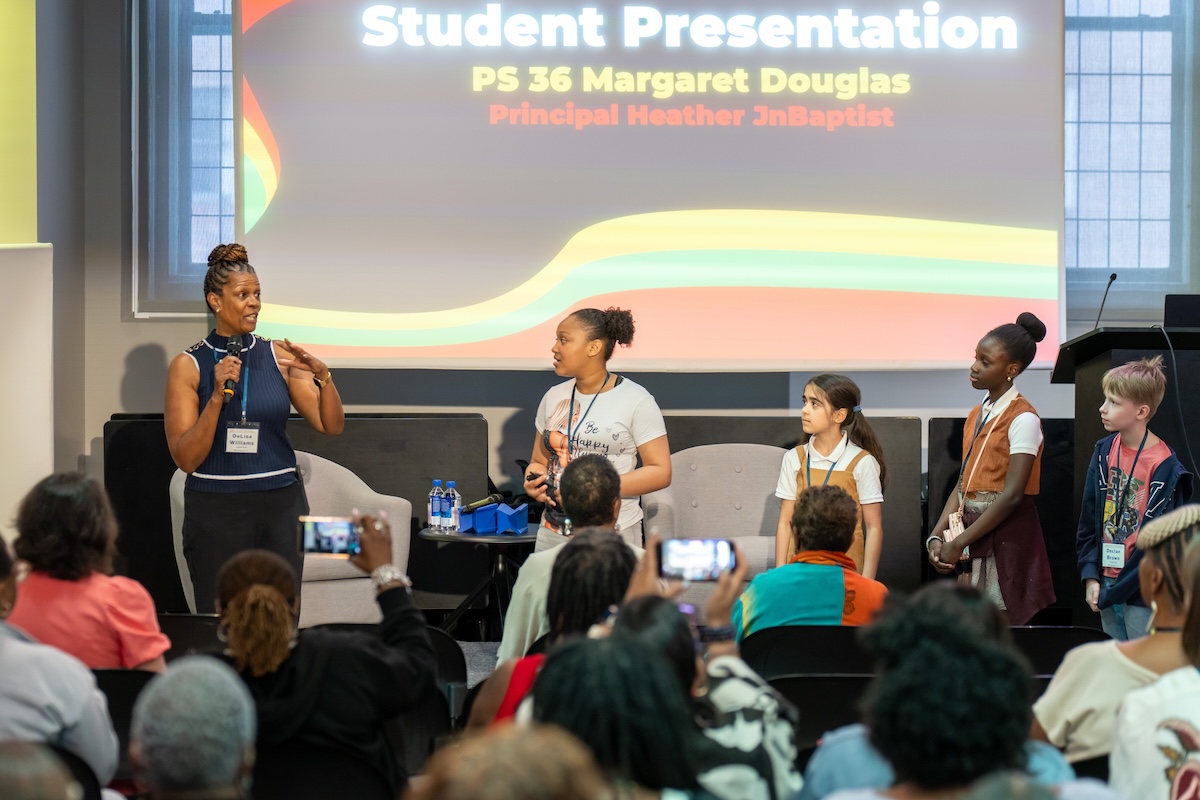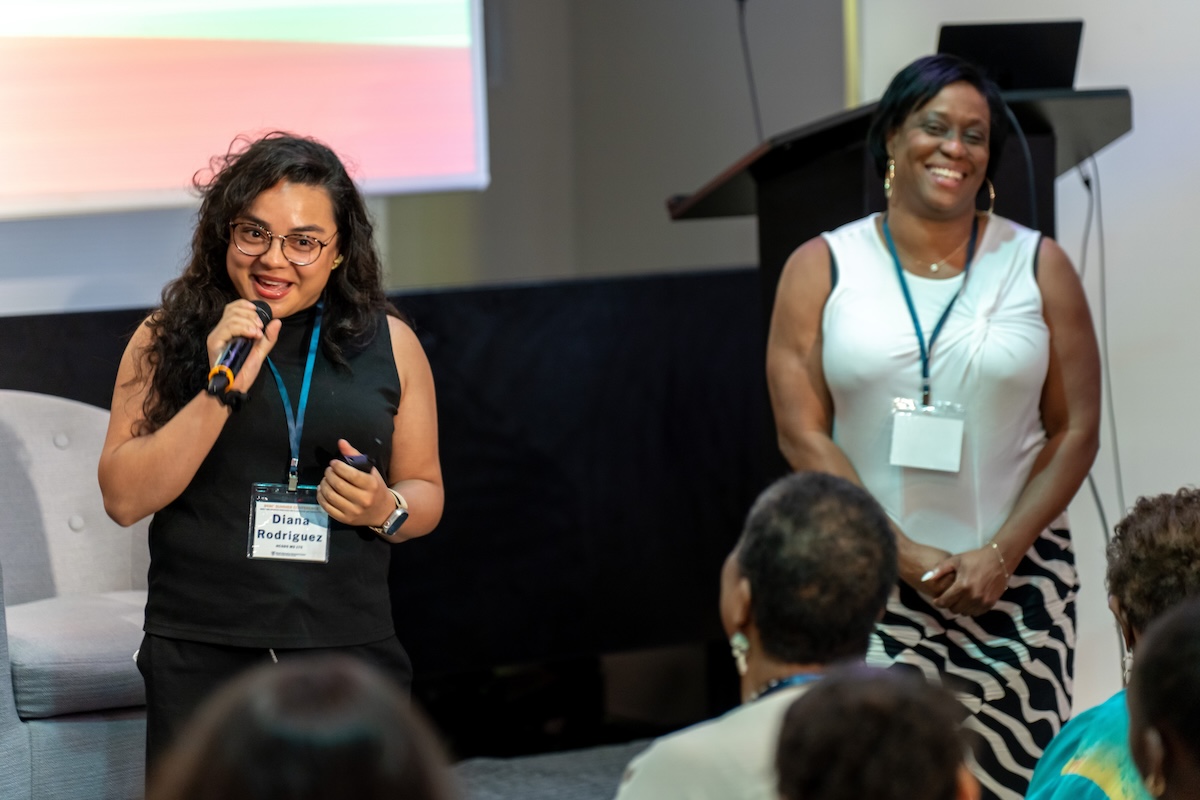As New York celebrates one year of the landmark curriculum, Black Studies as the Study of the World, its creators convened educators during their second annual Black Education Research Center (BERC) Summer Conference, a professional development opportunity to support implementation.
“At BERC, we believe that Black studies is essential for all students,” said Sonya Douglass, Professor and BERC’s Founding Director, in her welcome remarks. “When we center the lives and contributions of individuals, cultures, and communities who have existed in the margins [and] make space for multiple ways of knowing, we create more just, more inclusive and more liberating learning environments for everybody.”
This year’s conference coincides with the New York City Council granting additional funding to BERC to support continued implementation over the next year.
Read on for some takeaways from the conference.
The curriculum’s emphasis on project-based learning is boosting engagement
The learning benefits of project-based learning are well-documented and the Black studies curriculum provides plenty of inspiration. For example, Rachael Cooper, a third-grade teacher at PS175, taught a range of lessons from the curriculum including ones on Adinkra symbols and the relationship people of African descent have with the environment. “[The projects] sparked them learning different things like how to design a garden. Even kindergarteners really enjoyed it.”
This deeper participation helps children develop their critical thinking skills, as experienced by fifth-grade teacher Delisa Williams, who experienced similar results when she led her PS36 students in the creation of a tap tap bus — a highly decorated shared taxi — as part of a lesson on Haitian arts and culture.
“When they created and described their [tap tap bus], it seemed to have more meaning to them,” said the educator, who presented her implementation experience alongside four of her students at the conference. “Because [students] were able to incorporate their own version of something that they were studying, they were able to lend their creative touch to the lesson.”
Importantly, many of the students who provided testimonials at the conference, both on video and in-person, noted how much fun they had learning about Black studies, a testament to the teachers’ commitment and curriculum’s early success.
BERC resources provided vital implementation support
To ensure that teachers from a wide range of backgrounds feel comfortable teaching the content in Black Studies as a Study of the World, the curriculum includes a wealth of resources like a book list, teacher notes, and even lesson plan guides. The comprehensive nature of the curriculum eased adoption for many teachers but, “what was most helpful was that the resources were included,” said Williams. “[It] made it a lot easier for me to focus on the actual content.”
Continued teacher support is a critical aspect of successful curriculum implementation in schools and as such, BERC created the Virtual Learning Series to support teaching the Black studies curriculum — an eight-part webinar series that offered a deep dive into key themes of the curriculum.
For Williams, the depth of the curriculum sparked additional questions, and BERC was able to provide support. “The Virtual Learning Series…made for a good learning experience before I presented the information to my students.”
Support resources also help teachers take on new curricula according to Nicole Feliciano, a social studies teacher with more than 15 years of experience who presented at a conference workshop.
“Oftentimes these rich curriculums come out and get dropped into the lap of social studies teachers who are already trying to figure out how to cover so much content in a year and it becomes very overwhelming,” said the former social studies department head at West Prep Academy.
To counter this trend, when Feliciano was pushing for implementation of the Black studies curriculum, she used the accompanying resources to create a 19-page internal document outlining exactly how her teachers could incorporate the new material into their classrooms.
Pushback to Black studies should be expected, but not accepted
While the backlash to including Black studies in U.S. schools and colleges has been particularly strong in recent years, the response is nothing new, according to Dawn Williams, Professor and Dean of the School of Education at Howard University, who gave the morning keynote address at the BERC conference. Her address on the pendulum theory — the idea that society swings between extremes as groups react to change and take action — highlighted that there has been resistance to Black studies instruction since the first program was founded at San Francisco State University in 1968 after a five-month student strike. However, despite concerted efforts to the contrary, in 2021 there were nearly 1,200 Black studies programs at U.S. colleges and universities.
Williams encourages advocates of equity and justice to continue their work through the tug-of-war between inclusive education and more traditional approaches. “We need to teach through that resistance. This curriculum is helping you to [do that],” she said.
Williams also called for educators to be generous with the knowledge they’re gleaning from professional development opportunities. “You’re going to be exposed to a lot of information and a lot of resources. You want to make sure others are as well. That is the way we’re going to share our coalition,” she added. And indeed, teachers who attended the first conference and virtual learning series offered by BERC passed on the knowledge to their colleagues, supporting implementation at some schools.
The conference also included keynote remarks from Tyrone Howard — Professor of Education at the University of California, Los Angeles and former president of the American Educational Research Association — who presented “Centering Blackness for School Transformation: Implications for Practice, Curriculum and Research.”
